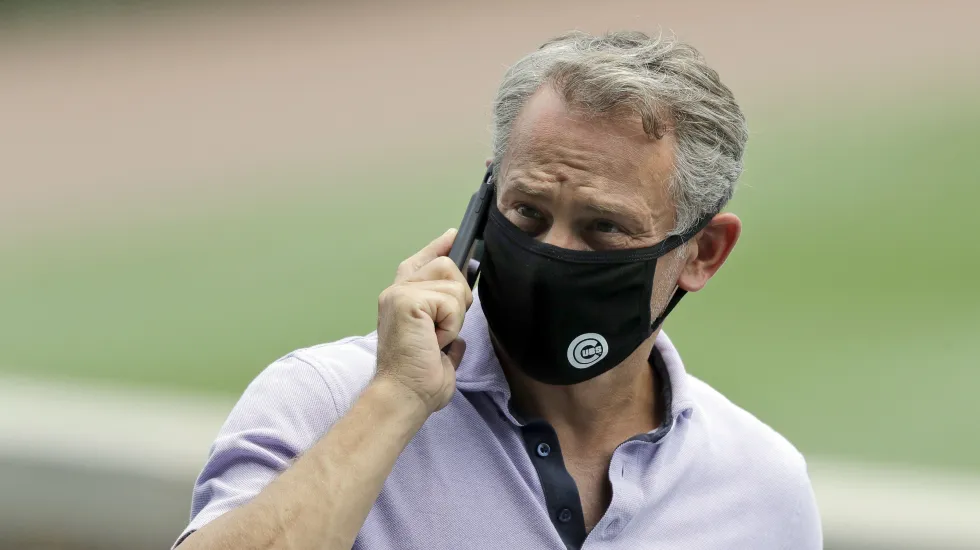
MESA, Ariz. — Just before the last collective bargaining agreement expired, the Cubs made the acquisition that defined their pre-lockout offseason.
They agreed to a three-year, $71 million deal with right-hander Marcus Stroman, elevating their starting rotation hours before the Major League Baseball owners imposed the lockout.
The Cubs couldn’t have known then that the lockout would last 99 days, with MLB and its players union agreeing to a labor deal Thursday, according to multiple reports. That timeline made it the second-longest work stoppage in MLB history. Once the CBA is ratified, free agency can re-open. The owners’ meeting to ratify the CBA is reportedly scheduled for Thursday evening.
Then, the Cubs and 29 other big-league clubs will be able to resume their interrupted offseason. And it’s an important one for the North Side team that traded away most of its stars last summer. The Cubs’ next moves will set their course for their buildup after the teardown.
“I don’t know what the definition of a rebuild is,” Cubs president Jed Hoyer said after the trade deadline. “I think you should wait until you see what we do this winter until you decide what we’re going to do (moving forward).”
The Rangers were the biggest players on the pre-lockout free agent market, committing $561.2 million in four signings. By comparison, the Cubs were far from making tidal waves, but they did make progress toward assembling a competitive pitching staff.
“Obviously, with the potential lockout, the Dec. 1 date, you never know how people would react,” Hoyer told reporters before the CBA expired. “We didn’t know if no one would make any signings or if it would be a flurry, and it ended up being a flurry. And I think that flurry in particular was very focused on pitching. I feel very good that we added two starting pitchers prior to Dec. 1.”
The Cubs started by acquiring outfielder Herold Ramírez from the Guardians in November. Then they claimed lefty Wade Miley off waivers, signed free agent catcher Yan Gomes and outfielder Clint Frazier, and re-signed outfielder Michael Hermosillo. But by signing Stroman on the eve of the lockout, the Cubs transformed their early offseason from innocuous to at least notable.
The offseason is far from over. The condensed timeline isn’t expected to put a damper on the amount of activity.
The Cubs have addressed one priority — its largely inexperienced starting rotation in the second half of the season posted a National League-worst 5.99 ERA, according to FanGraphs. But they could still add starting pitching, need bullpen depth and will have to decide what to do at shortstop.
Adding relievers became even more important this week, when right-hander Codi Heuer underwent Tommy John surgery Monday. He’ll miss the 2022 season.
As for shortstop, middle infielder Nico Hoerner could take over the position. But in his young career, which has spanned a pandemic-shortened season and a series of minor injuries, Hoerner has yet to play 50-plus games in a season.
The Cubs could add more middle infield depth, also keeping in mind that second baseman Nick Madrigal is returning from season-ending surgery on a hamstring tear.
Come through and let’s have Wrigley jumping my dawg! @TeamCJCorrea @Cubs
— Marcus Stroman (@STR0) March 10, 2022
They could also sign an established shortstop. But don’t forget how competitive the market is for free agents like Carlos Correa. Corey Seager, also at the top of a deep shortstop free agent class, signed a 10-year, $325 million deal with the Rangers before the lockout. Will the Cubs be willing to commit that kind of money or more?
Those figures didn’t stop Stroman from renewing his recruiting pitch.
“Come through and let’s have Wrigley jumping my dawg!” he tweeted Thursday afternoon, tagging Correa.
It’s far too early to judge the Cubs’ offseason — or by Hoyer’s logic, define this post-Anthony Rizzo/Javy Báez/Kris Bryant phase. The club’s moves before Opening Day will have the final say.







